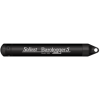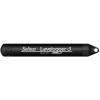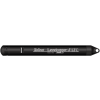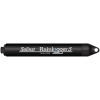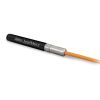Solinst Levelogger 5 Junior Water Level Loggers
Features
- Maintenance-free, water-tight design with direct or optical data upload
- Increased memory of up to 75,000 readings of level and temperature
- Compatible with Levelogger Series Software & accessories
- Free ground shipping
- Expedited repair and warranty service
- Lifetime technical support
- More
Overview
The Solinst Levelogger 5 Junior provides an inexpensive alternative for measuring groundwater and surface water levels and temperature. The Levelogger 5 Junior combines a pressure sensor, temperature detector, a datalogger, and 5-year battery (based on a 1-minute sampling rate) in one compact 22mm x 160mm (7/8" x 6.3") stainless steel housing.
Durable
The Levelogger 5 Junior records absolute pressure using the same durable Hastelloy pressure sensor as the Levelogger 5. The Hastelloy sensor performs well in harsh environments and can withstand 2 times overpressure without permanent damage.
Data Storage
The Levelogger 5 Junior features a memory with a capacity of 75,000 sets of temperature and water level data points. Readings are linear at a user-defined interval between 0.5 seconds to 99 hours. Accuracy is 0.1% FS with lifetime factory calibration. Real Time View option allows immediate viewing of live water level and temperature readings, independent of scheduled programming intervals.
In The News
Wildfire Prevention in the Sierra Nevada Region with the Yuba Watershed Institute
Though recent wildfires have sparked new conversations about wildfire management and response, groups like the Yuba Watershed Institute have been monitoring the forests and water resources of the Sierra Nevada region for decades, managing approximately 5,000 acres of land with the Bureau of Land Management (BLM) and about 7,000 acres in private land partnerships. The goal of the Institute is to work with local communities and land agencies to improve watershed and forestry management through informed practices and public outreach. The goals of the Yuba Watershed Institute are three-fold: Improve the ability of fire suppression agencies like the California Department of Forestry and Fire Protection ( CAL FIRE ) and the US Forest Service.
Read MoreWave Sensors Integration with NexSens Buoys: A Cutting-Edge Solution for Wave Measurment
Real-time wave data supports accurate weather prediction, safe and efficient maritime operations, and provides valuable safety and operating condition information for recreation and commercial fishing. Understanding wave dynamics also helps with the design of protective coastal structures like seawalls, breakwaters, and jetties. It also supports better prediction of their impact on sediment transport and coastal geomorphology. Wave data is a key factor in qualifying and designing offshore wind farms and harnessing kinetic energy for electrical generation. It helps with the understanding of ocean-atmosphere interactions and contributes to studies of sea-level rise and climate change impacts.
Read MoreSpring 2025 Environmental Monitor Available Now
In the Spring 2025 edition of the Environmental Monitor, we highlight partnerships across the world and the importance of collaboration between government agencies, universities, environmental groups, local communities, and other stakeholders. From great white shark research in Cape Cod to monitoring fisheries in Lake Erie, this latest edition underscores partnerships that connect stakeholders in a watershed through environmental data. With an emphasis on data sharing, a combination of real-time and discrete sampling keeps the public and partners informed of environmental conditions. Our writers also sought out science professionals dedicated to working with peers within and outside of the environmental sector.
Read More














































